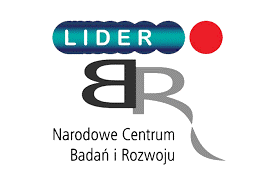The Institute will receive funding for the implementation of two new projects. The projects will be financed as part of two competitions: M-ERA.NET 2 Call 2019 (NCN) and LIDER (NCBR).
- Project financed as part of the "M-ERA.NET 2 Call 2019" competition:
"ADDITIVE MANUFACTURED COMPOSITE SMART STRUCTURES WITH EMBEDDED FIBRE BRAGG GRATING SENSORS".
The project is conducted in cooperation with the Institute of Fluid Flow Machinery of the Polish Academy of Sciences (project leader) and Kaunas University of Technology.

The aim of the project is to develop a method for the manufacturing of CFRP/GFRP composite materials using the modified FDM (fused deposition modelling) method, which enables embedding of Bragg's fibre optic sensors during the production process. Due to the integrated fiber optic sensors, it will be possible to measure and record the deformations generated in the component by operational and environmental loads. As a result, the technical condition of components manufactured using the developed method can be monitored, which will significantly increase safety of their operation.
The project team will involve researchers from the Department of Intelligent Technologies: Anita Orłowska-Gałęzia, PhD, Cezary Graczykowski, PhD and Piotr Pawłowski, PhD.
- Project financed as part of the "LIDER" competition:
"ULTRASONIC, QUANTITATIVE MONITORING OF THE EFFECTS OF CHEMOTHERAPY OF BREAST TUMORS".
The aim of the LIDER Programme, led by The National Centre for Research and Development (NCBiR), is to support researchers’ career development, especially increasing the competencies of self-reliant planning and managing a research team through the realization of application-oriented research projects. Within the programme, Hanna Piotrzkowska-Wróblewska, PhD from Department of Ultrasound (IPPT PAN) will receive financial support for realization of the project.

Neoadjuvant chemotherapy (NAC) is often the initial phase of treatment for breast cancer. Its purpose is to reduce the size of the tumor and prevent metastasis. Currently, the effectiveness of the therapy is assessed on the basis of changes in tumor dimensions using techniques for medical imaging (US, MMG, MRI). Unfortunately, this method has low accuracy. Changes in tumor dimensions during treatment: 1) not always reflect changes in tissue microstructure, 2) even in the case of a positive response, are observed a few weeks after starting of therapy. Consequently, in non-responders, the use of NAC means subjecting them to ineffective treatment for many weeks, delaying treatment modification for more effective, and consequently reducing the chances of recovery. In the group of patients responding positively to treatment, "overtreatment" occurs and at the stage of surgical treatment, mastectomy is performed instead of conservative surgery.
The answer to this problem will be a quantitative ultrasound diagnostic system whose development is the main goal of the project. Its operation will not be based on the assessment of changes in tumor size but will be based on the so-called quantitative ultrasound (QUS). QUS is based on raw ultrasound signals returning from tissues. The development and application of appropriate methods of ultrasonic echo analysis allows characterizing the state of tissue through its parameterization.
The proposed method is a kind of thick-needle ultrasound biopsy followed by histopathological examination. Its advantage is sensitivity and non-invasiveness. It will allow the assessment of changes occurring in the tumor under the influence of NAC just a few days after the start of therapy and will allow the patient to be monitored at any frequency during the entire treatment process. In addition, thanks to the use of quantitative assessment, the test result will be fully objective and independent of the operator's skills.















